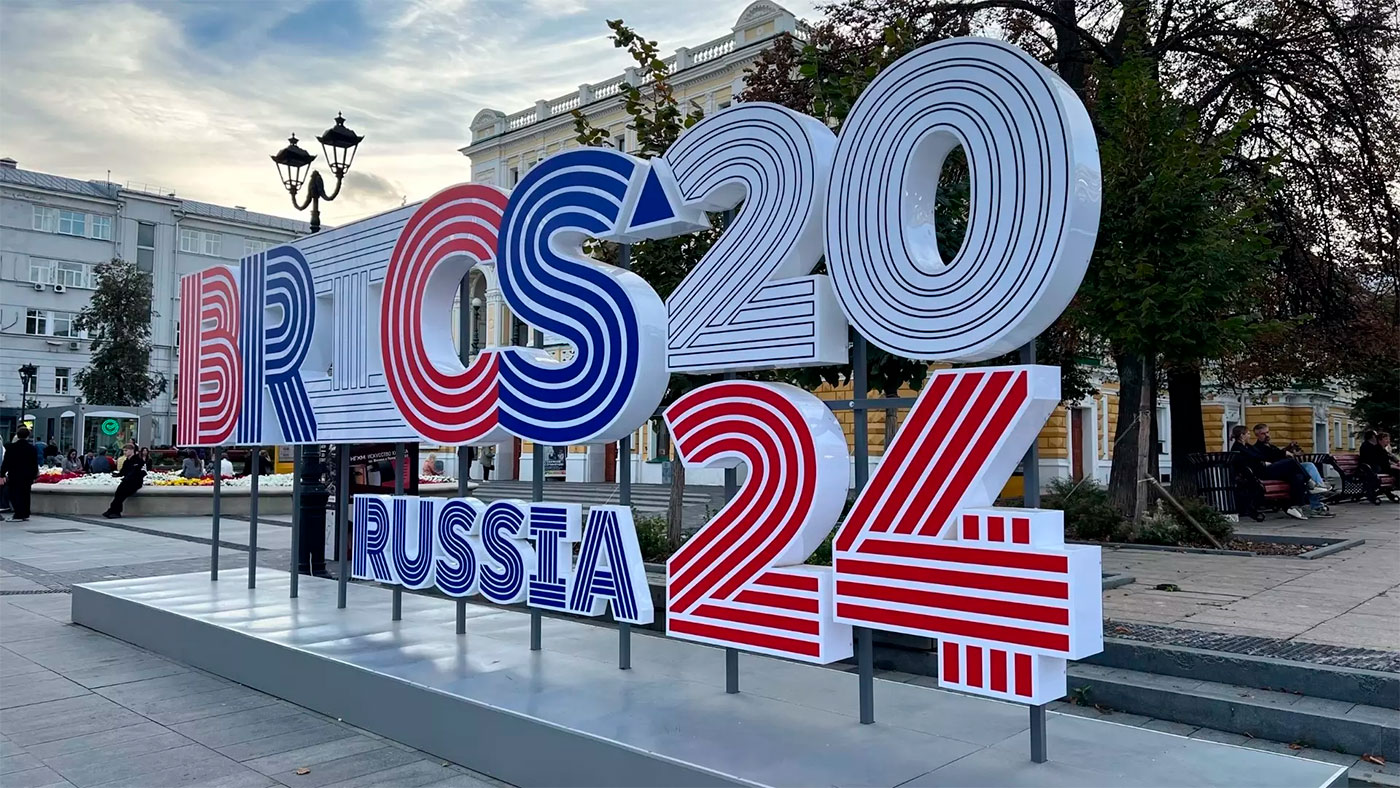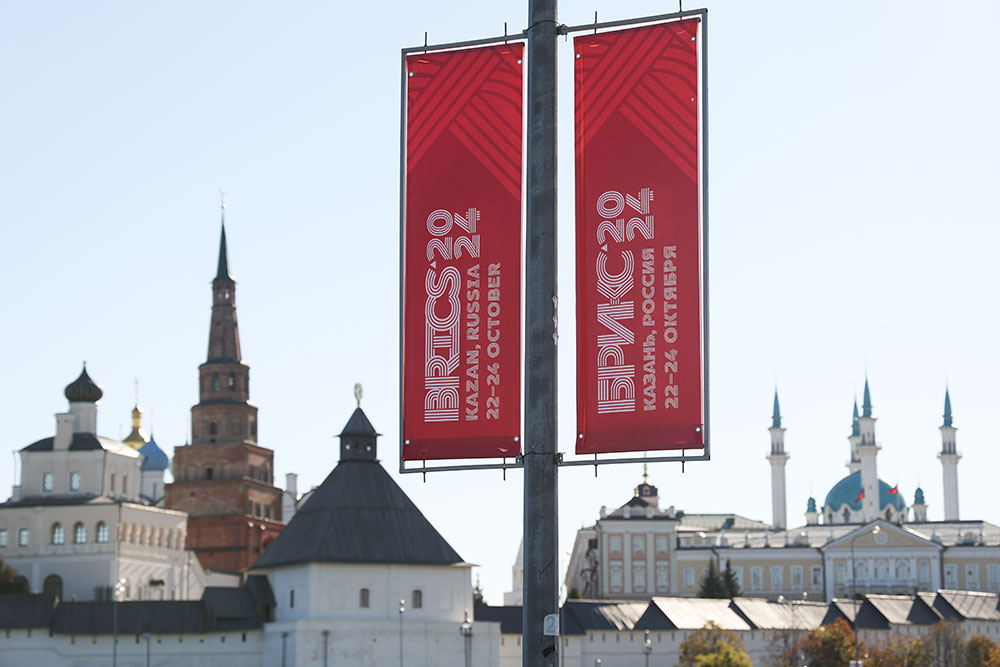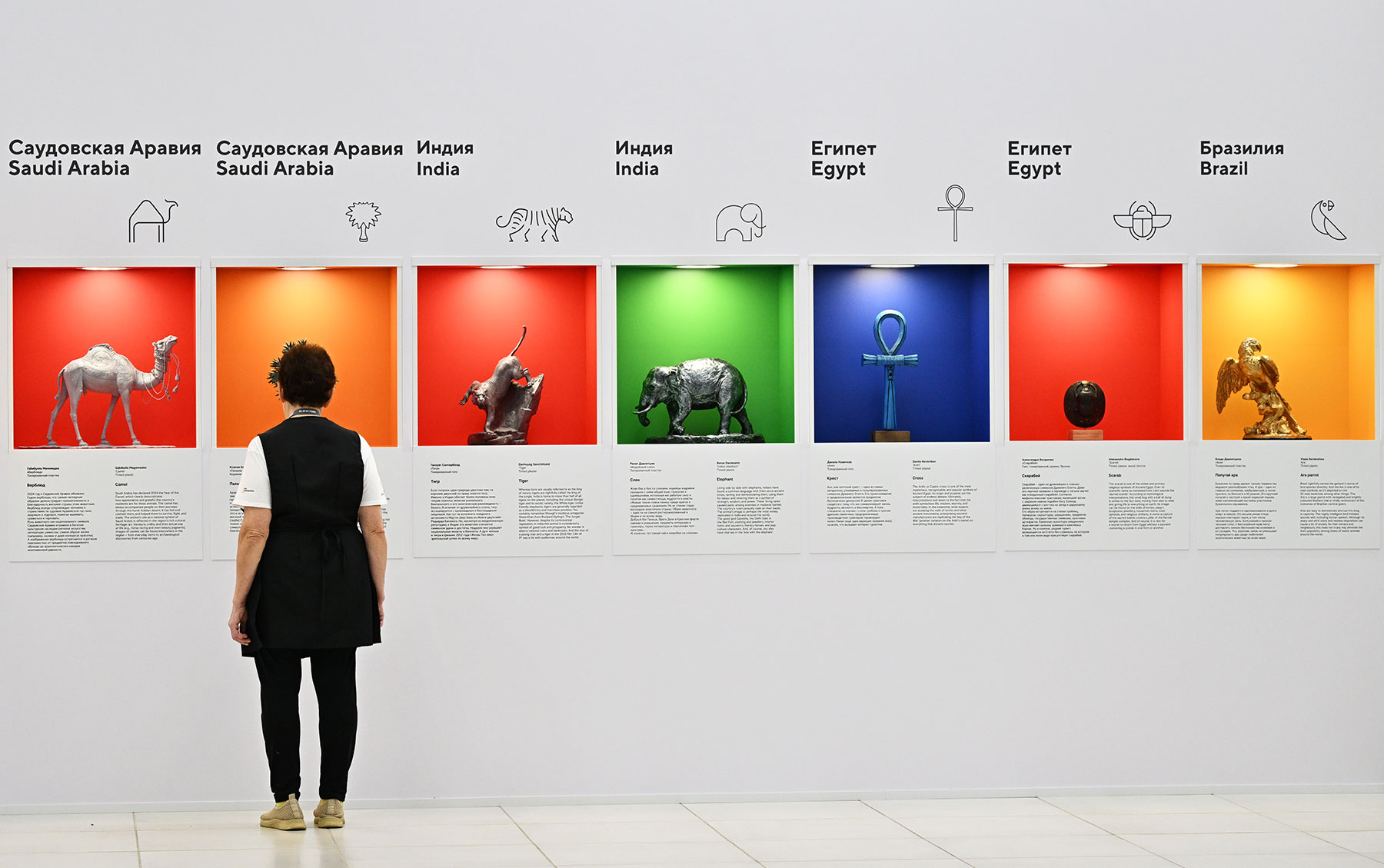Some of the observers look at BRICS with hope and even with admiration considering it to be a symbol of long-awaited changes in the international system that should make the system more democratic and equitable. Others express their skepticism and concerns about the rapid rise of BRICS linking this rise to an anticipated fierce confrontation between the West and the Rest and a subsequent fragmentation of global politics and economy. Quite often these hopes and fears appear to be politically loaded and blown out of any reasonable proportions. Let us have a closer look at the BRICS group and try to distinguish between what the group cannot and what it can deliver in the nearest future.
BRICS cannot become a global economic integration project. The overall trade within the whole “old” BRICS area is significantly smaller than, for instance, the trade between China and ASEAN, or China and the European Union. The same can be said about mutual investments or about multilateral BRICS centered R&D and production chains. For the time being, it is hard to imagine even a free trade zone embracing all the vast BRICS area—concerns about the overwhelming China’s economic might fly high within the BRICS group.
BRICS will not turn into a multilateral political or security alliance of an anti-Western nature. Being an explicitly non-Western grouping, BRICS is not and will not become even an implicitly anti-Western alliance. Moreover, many of BRICS members have traditionally exercised a lot of wariness regarding joining any rigid political and military alliances of blocks assuming that such steps could limit their sovereignty or jeopardize their foreign policy freedom of action.
BRICS is not likely to contribute a lot to resolving disputes between its members or disputes between its members and third parties. BRICS is hardly in a position to assist the United Nations as a peace-making multilateral mechanism and it is very unlikely that the UN Security Council with the current composition of its permanent members might ever decide to entrust BRICS with such a mission.
BRICS will never become an analogue to G7. BRICS is a heterogeneous, not a homogeneous community of nations that represent unique civilizations with their quite specific value systems and political institutions. There is no such a leader (like U.S. in G7) and such a hierarchy within BRICS, neither China, nor Russia, nor any other group member can impose its will or its agenda on the rest of the group.
BRICS can promote trade and investments among its members, as well as contribute to economic and social development of these members. Though both NDB and CRA remain relatively young and modest initiatives, over time they might well turn into cornerstones of the new global financial architecture. Besides, BRICS is destined to accelerate the ongoing process of de-dollarization of the global economy by promoting trade between its members in local currencies and experimenting with an innovative digital payment platform (the so called “BRICS Bridge”) and other payment mechanisms.
BRICS could help to shape common non-Western approaches to global problems. The importance of this role that BRICS can play is going to increase over time—the group can become one of the most efficient mechanisms that the rising Global South has withing its reach to make its voice listened to in the future discussions on the new world order.
BRICS is capable of contributing to the dialogue of civilizations. If high-level political dialogue within BRICS constitutes the skeleton of the group, and trade and investment stand for the muscle tissue, social interaction in multiple formats at various levels can be regarded as the blood in the BRICS body.
BRICS can become an important source of ideas and proposals for UN, G20 and other universal bodies. Being an important non-Western group of nations, BRICS is in a position to break Western monopoly and to come up with proposals reflecting fundamental interests of a broad range of developing countries, not limited only to BRICS members.
It is clear that 2024 may become a historical turning point for the BRICS group—not only in terms of integrating new members, but also in terms of shifting BRICS from a high-level political club into one of the indispensable building blocks for the emerging world order. The Kazan mission of the BRICS leaders is challenging, but not entirely impossible.
Recently the BRICS group has become the flavor of the political season. The ongoing hype around BRICS arguably started In August of 2023, when at its 15th summit in South Africa’s Johannesburg the group decided to go ahead with doubling the number of its members. The room for further enlargement still remains quite spacious: today we can see a long line of nations willing to join the group in the nearest future. Some of the observers look at BRICS with hope and even with admiration considering it to be a symbol of long-awaited changes in the international system that should make the system more democratic and equitable. Others express their skepticism and concerns about the rapid rise of BRICS linking this rise to an anticipated fierce confrontation between the West and the Rest and a subsequent fragmentation of global politics and economy. Quite often these hopes and fears appear to be politically loaded and blown out of any reasonable proportions. Let us have a closer look at the BRICS group and try to distinguish between what the group cannot and what it can deliver in the nearest future.
BRICS cannot become a global economic integration project.
Champions of BRICS like to mention that the group now accounts for more than a quarter of the world’s territory and for more than 40% of the global population. They also argue that in terms of the total purchasing power parity GDP, the BRICS’ share is around 33%, which puts the BRICS group well ahead of G7 (the seven largest Western economies). Moreover, BRICS role in the global economy is going only to further increase in the observable perspective and by 2050 the G7 aggregate economy will be only a half of the BRICS size, even if the latter stops adding new members. All of this is true. However, BRICS does not constitute a natural completely self-sufficient economic center of power. The overall trade within the whole “old” BRICS area is significantly smaller than, for instance, the trade between China and ASEAN, or China and the European Union. The same can be said about mutual investments or about multilateral BRICS centered R&D and production chains. For the time being, it is hard to imagine even a free trade zone embracing all the vast BRICS area—concerns about the overwhelming China’s economic might fly high within the BRICS group.
BRICS will not turn into a multilateral political or security alliance of an anti-Western nature.
Since its inception back in 2006, BRICS has always been a politically very diverse group and this diversity increased further with the 2023 enlargement decision. Within the group, one can find a socialist country (China), a monarchy (United Arab Emirates), a liberal democracy (India) and even a theocratic republic (Iran). Foreign policy and security priorities of group members significantly differ from each other, each of the member-states has its own specific relations with the West ranging from a direct confrontation (Russia) to a complex mixture of competition and cooperation (China) to an intense multidimensional collaboration (India). Being an explicitly non-Western grouping, BRICS is not and will not become even an implicitly anti-Western alliance. Moreover, many of BRICS members have traditionally exercised a lot of wariness regarding joining any rigid political and military alliances of blocks assuming that such steps could limit their sovereignty or jeopardize their foreign policy freedom of action.
BRICS is not likely to contribute a lot to resolving disputes between its members or disputes between its members and third parties.
It would be great to imagine BRICS mediating conflicts between China and India, between Iran and Saudi Arabia, between Egypt and Ethiopia or to watch BRICS negotiating a peace settlement between Russia and Ukraine and contributing to the Middle East peace process. However, all these problems are too sensitive and difficult to be handled in such a broad and diverse format. The odds are that there will be no full consensus within the group on how exactly any of these conflicts should be dealt with. At best, the BRICS format can produce very general political declarations calling for a peaceful resolution of international disputes; it can also offer convenient opportunities for informal bilateral or multilateral consultations focused on specific crises or conflicts to be arranged on the margins of the BRICS summits or ministerials. BRICS is hardly in a position to assist the United Nations as a peace-making multilateral mechanism and it is very unlikely that the UN Security Council with the current composition of its permanent members might ever decide to entrust BRICS with such a mission.
BRICS will never become an analogue to G7.
They often compare BRICS to G7 and sometimes refer to G7 as a model for BRICS to imitate and to develop further. Indeed, G7 that has already been in operation for more than fifty years, over this long time it has accumulated a lot of useful institutional growth experience and some of this experience should be thoroughly considered by the BRICS group. However, there are at least two important distinctions between the two groups. First, G7 is a group of like-minded nations united not only by a very deep and multidimensional economic interdependence, but also by shared values and converging political and social systems (this is one of the reasons why Russia could never properly integrate itself into the G7 group and finally dropped out of it). BRICS is a heterogeneous, not a homogeneous community of nations that represent unique civilizations with their quite specific value systems and political institutions. Second, G7 being a formally multilateral group, still has a clear hierarchy with the United States acting as the undisputed group leader. There is no such a leader and such a hierarchy within BRICS, neither China, nor Russia, nor any other group member can impose its will or its agenda on the rest of the group. Therefore, comparing BRICS and G7 is like comparing a whale and an elephant—both animals are big, but they distinctly differ from each other.
None of the above-mentioned limitations and constraints suggests that BRICS is a completely situational and superficial initiative, which is doomed to remain only a high-profile talking shop or a fancy international club for ab assorted variety of ambitious non-Western state leaders looking for an additional exposure and stature. On the contrary, there are many specific ways, in which the group—with the due political will, commitment and dedication—can serve its members and the international community at large. The following functions appear to be the most significant.
BRICS can promote trade and investments among its members, as well as contribute to economic and social development of these members.
The very first attempts to facilitate economic transactions within BRICS turned out to be quite successful: over last ten years, the intra-BRICS trade grew on the average by 10,7% annually, while the overall global trade grew by only 3% per year. The group can boast of the two innovative bodies that rival traditional West-made financial institutions—the New Development Bank, or NDB (which is regarded as a plausible alternative to IBRD) and the BRICS Contingent Reserve Arrangement, or CRA (a potential alternative to IMF). Though both NDB and CRA remain relatively young and modest initiatives, over time they might well turn into cornerstones of the new global financial architecture. Besides, BRICS is destined to accelerate the ongoing process of de-dollarization of the global economy by promoting trade between its members in local currencies and experimenting with an innovative digital payment platform (the so called “BRICS Bridge”) and other payment mechanisms. It will be particularly important for the countries exposed to various Western sanctions like Russia and Iran.
BRICS could help to shape common non-Western approaches to global problems.
The BRICS agenda is gradually expanding, embracing such areas as managing the global energy transition, providing for food security, fighting against international terrorism, regulating AI and so on. It is not easy to reach common positions on all these and similar matters, but narrowing existing gaps in perceptions and approaches to the emerging global agenda is critically important. One should note that given its diversity and inclusivity, BRICS can offer a unique platform, at which various non-Western views on global governance and on an extended reproduction of global commons can be articulated and, hopefully, reconciled. The broad range of these issues extends to both security and development dimensions. The importance of this role that BRICS can play is going to increase over time—the group can become one of the most efficient mechanisms that the rising Global South has withing its reach to make its voice listened to in the future discussions on the new world order.
BRICS is capable of contributing to the dialogue of civilizations.
The importance of a direct dialogue between different civilizations bypassing earlier indispensable and often biased Western intermediaries cannot be overestimated. The preferred approach to this dialogue was outlined by Chairman Xi Jinping in his Global Civilization Initiative announced in March of 2023. The BRICS framework offers a whole variety of new opportunities to engage in such a dialogue. Out of more than two hundred events that Russia as the current BRICS chair-country for 2024 scheduled for this year, a large share belongs to gatherings of universities, media outlets, research centers, civil society institutions, professional associations, youth organizations and etc. This social interaction in all of its possible formats might become an essential addition to mutual trade and investment and multilateral trade. If high-level political dialogue within BRICS constitutes the skeleton of the group, and trade and investment stand for the muscle tissue, social interaction in multiple formats at various levels can be regarded as the blood in the BRICS body.
BRICS can become an important source of ideas and proposals for UN, G20 and other universal bodies.
For a long time, Western institutions and groupings—such as EU, OECD G7 and so on—served as a prime and often even as a sole source of new ideas, proposals, models and principles (as well as personnel) for universal organizations and forums ranging from the United Nations to G20. Being an important non-Western group of nations, BRICS is in a position to break this monopoly and to come up with proposals reflecting fundamental interests of a broad range of developing countries, not limited only to BRICS members. These articulated positions include specific proposals on reforming multilateral international institutions, including the United Nations itself. The BRICS ability to do that will depend on the political commitment, on the quality of experts involved, on the outreach capacities and on other factors. Still, BRICS—along with SCO, BRI, ASEAN and other non-Western multilateral bodies—is in a position to engage into the global competition of ideas at a point, when ideas become particularly valuable.
As Otto von Bismarck appropriately put it, “politics is the art of the possible”. The forthcoming BRICS summit in Kazan will be an important reality check of what BRICS can and of what it cannot accomplish. Moscow took its 2024 chairmanship in the group very seriously—the Kazan gathering will be by far the most representative and well-attended international political event that Russia hosts this year. On top of BRICS member-states leaders, the summit attracted many heads of partner nations as well as CEOs of major international organizations. Clearly, the Russian leadership intends to demonstrate that, despite continuous efforts by the West, Russia is not isolated in the international community and it can claim a lot of friends and partners in the Global South.
Even more importantly, Russia did it homework to the extent possible in paving the way to the summit with numerous ministerials, official consultations at lower levels, parliamentary, business and expert meetings. At all these events they should have worked hard in order to prepare specific documents to be signed in Kazan and various road-maps for moving ahead in a number of priority areas. In order to become a significant international actor, the group also needs to get more institutionalized and more focused on specific problems. Another important dimension of the group’s maturation would be a more transparent and more formalized accession process. At the forthcoming summit in Kazan they are likely to define the status of a ‘partner country’, which will be short of the full membership, but will allow select partners to be deeply engaged in specific BRICS projects.
It is clear that 2024 may become a historical turning point for the BRICS group—not only in terms of integrating new members, but also in terms of shifting BRICS from a high-level political club into one of the indispensable building blocks for the emerging world order. The Kazan mission of the BRICS leaders is challenging, but not entirely impossible.
First published in the Guancha.cn.







